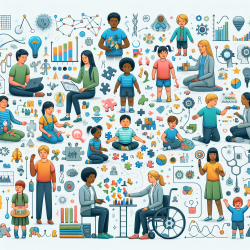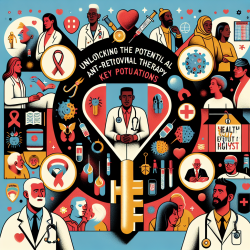Introduction
In the ever-evolving field of speech-language pathology, the integration of data-driven methodologies is crucial for enhancing the effectiveness of interventions. The research article titled "Statistical Platform for Individualized Behavioral Analyses Using Biophysical Micro-Movement Spikes" offers groundbreaking insights into how wearable biosensors can be leveraged to improve clinical outcomes, particularly in children. This blog explores the implications of these findings and encourages practitioners to embrace data-driven approaches for personalized and impactful therapy.
The Power of Wearable Biosensors
Wearable biosensors, embedded in everyday devices like smartphones, are revolutionizing the way we assess neuro-motor control. These sensors provide a continuous stream of data that can be analyzed to understand the functionality of the nervous system. The research highlights the importance of moving away from subjective behavioral evaluations towards more objective, automated analyses. By doing so, we can achieve a higher level of precision in diagnosing and treating various conditions.
Implementing Data-Driven Approaches
For practitioners, the implementation of data-driven approaches involves utilizing the statistical platform outlined in the research. This platform employs a standardized data type, micro-movement spikes, which allows for the objective analysis of biophysical data. By focusing on fluctuations in peak amplitude and timing, practitioners can gain insights into the levels of motor control and autonomy of their clients.
- Objective Analysis: The platform provides a heuristics-free method for analyzing biosensor data, allowing for more accurate assessments.
- Standardized Metrics: By establishing standardized scales, practitioners can compare data across diverse populations, facilitating personalized interventions.
- Empirical Data Utilization: The use of empirical data ensures that analyses are grounded in reality, enhancing the reliability of conclusions drawn.
Encouraging Further Research
The findings from this research open up numerous avenues for further exploration. Practitioners are encouraged to delve deeper into the potential of wearable biosensors and the statistical platform to refine their approaches. By participating in research initiatives and contributing to the growing body of knowledge, practitioners can play a pivotal role in advancing the field.
Conclusion
Incorporating data-driven methodologies into speech-language pathology practice is not just an option but a necessity for creating better outcomes for children. The research on individualized behavioral analyses using biophysical micro-movement spikes provides a robust framework for practitioners to enhance their interventions. By embracing these insights and continuing to explore the potential of wearable biosensors, we can pave the way for more effective and personalized therapy solutions.
To read the original research paper, please follow this link: Statistical Platform for Individualized Behavioral Analyses Using Biophysical Micro-Movement Spikes.










